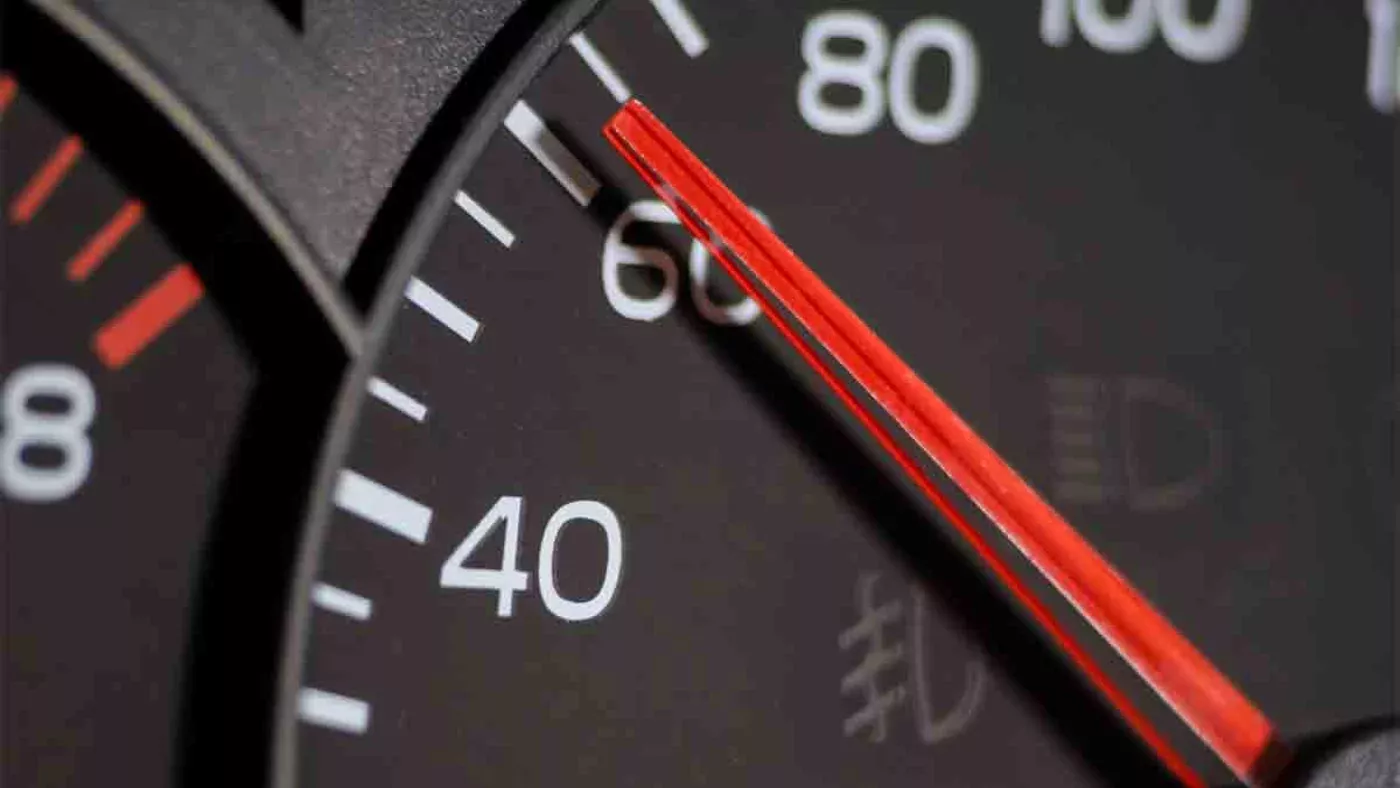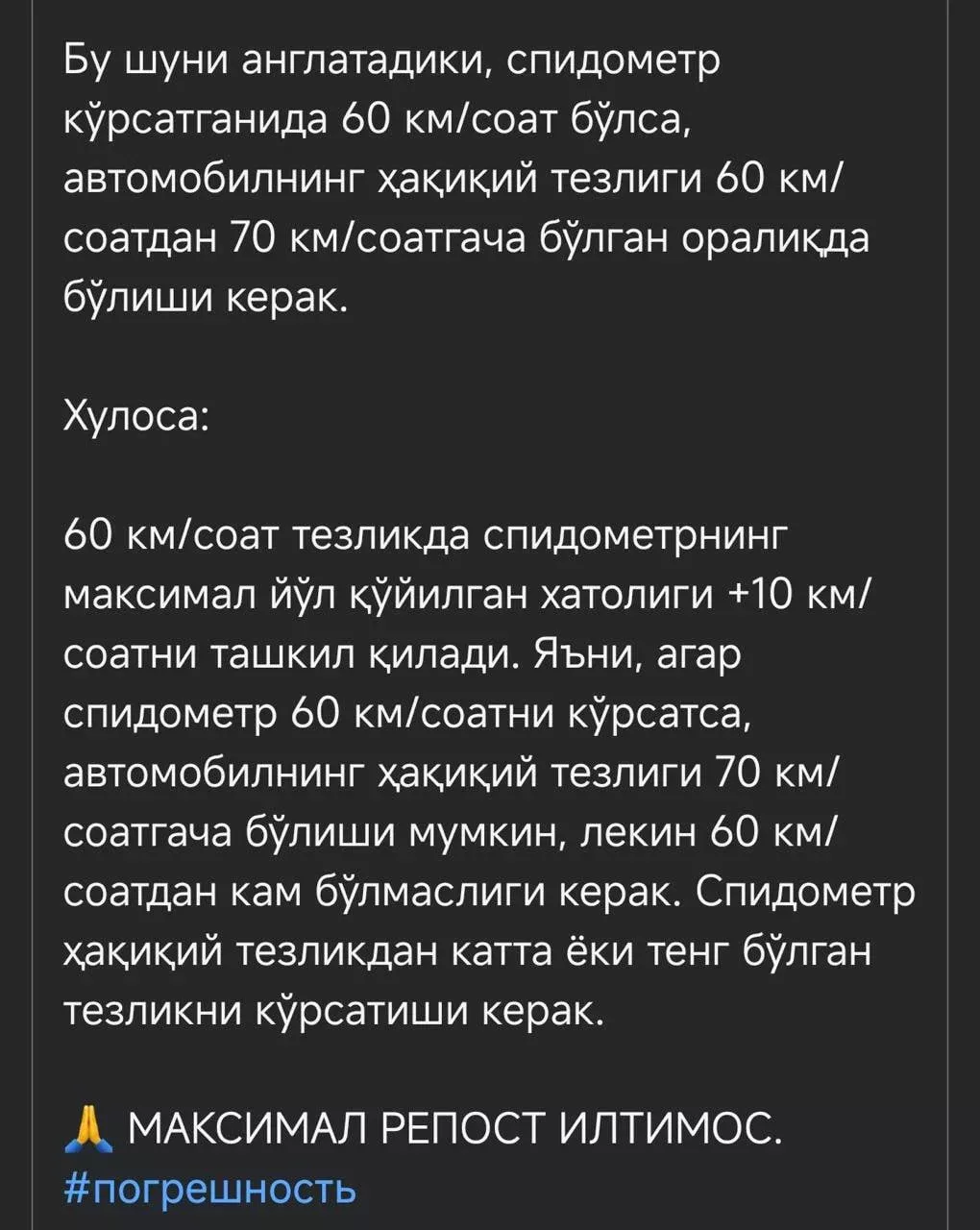Is this an incentive to walk fast or about the 10 km/h "margin of error" again

Among drivers, the belief that "if the rules are relaxed, there will be more freedom" is very widespread. However, few realize how ugly the consequences of this "freedom" can be for public safety. So, how should deputies act to avoid increasing risks to health and life?
If not, when discussing the increase of the error margin in speed measurement to +10 km/h, speed enthusiasts would not have put forward new demands, as their "appetite opened during the meal."
If you don't believe it, pay attention to the excerpt from the following post:

Look, when the car's speedometer shows 60 km/h, the actual speed should be around 60-70 km/h.
Shouldn't it logically require the opposite? Just this emphasis has inspired me to criticize some of my subjective opinions on this matter.
Speedometer and GPS: which one is reliable?
In fact, the speedometer of any car accurately shows the actual speed. At most, it may be off by 1 km/h lower or higher. This is how the factory "setup" is made, and it makes sense.
However, there is a difference in the speeds shown by the GPS installed in the car's anti-radar or GPS applications on mobile phones. For example, when my car's electronic speedometer shows 65 km/h, the GPS always shows 63 km/h.
That is, when the speedometer shows 67-68 km/h, the actual speed will be 65 km/h on the GPS. The drivers who object to this actually know this very well.
Then there's another thing: the car's speedometer measures speed based on the rotation of the wheel. In this case, the standard diameter of the tire installed at the factory is taken into account. Installing larger diameter disks and tires can increase the difference in the speedometer and actual speed by +5...+10 km/h. This is purely the driver's fault. No one has asked him to install a disk and tire of 18 instead of 15, or 21 instead of 17, right?
Minus 10 discount: is it a speed allowance or caution?
The error margin for radar speed detection is usually around 2-3 km/h. The -5 km/h deduction was based on that. It is unclear what the basis is for raising this error indicator to -10 km/h.
Despite an advocate for potential "auto-terrorists" saying, "this is not a permit for drivers to exceed the speed limit by an additional 10 km/h in populated areas," personally, I consider this exactly a permit to drive faster.
Such drivers, even if they are -10 km/h below the speed limit, will still get caught by the radar at 71 and complain to the government that "they are fined for just +1 km/h." However, they will actually be driving +11 km/h faster than allowed. Because they perceive it as "I have the right to drive up to 70 in a 60 zone."
Their advocate also supports this: "Brother, you should drive 60 in a 60 zone, not 65, so you won't get caught by the radar!" He doesn't say! "You have the legal right to drive up to 65, if they speed up a bit or due to the error of the devices, they are getting caught at 66, so give them a flat 10." Tomorrow, they will demand not to be satisfied with just 10 km/h, but to give them 15 km/h as well.
A middle ground for deputies
Now, deputies have the option not just to deduct -10 km/h for the error margin, but also to approve a discount of 10 percent of the established speed limit.
Then the speed:
- In areas limited to 50 km/h, up to 55 km/h,
- In areas limited to 60 km/h, up to 66 km/h,
- In areas limited to 70 km/h, up to 77 km/h,
- In areas limited to 100 km/h, up to 110 km/h will not incur fines.
It seems to be a way that neither burns the six nor the kebab, in my opinion. Moreover, this method is used in some countries. For example, in England.
Incorrect claim based on victim statistics
Another point: auto-terrorists love to bring up the argument that "even though fines have increased and radars and cameras have been installed, the number of accidents and victims on the roads is not decreasing."
In fact, the number of accidents and victims is decreasing, albeit slowly.
However, when they say "decrease," they probably mean it doesn't drop to "zero." Unfortunately, with our driving culture, it won't reach "zero" anytime soon. This is clear.
Therefore, speed limits should continue to be strictly enforced on the roads, especially in populated areas, without playing the drums for "flying" drivers.
Below are the figures by year. (The figures are lower in 2020 due to pandemic restrictions).
2019:
Number of accidents — 8092
Number of victims — 2094
2020:
Number of accidents — 6982
Number of victims — 1962
2021:
Number of accidents — 10001
Number of victims — 2426
2022:
Number of accidents — 9902
Number of victims — 2356
2023:
Number of accidents — 9839
Number of victims — 2282
2024:
Number of accidents — 9364
Number of victims — 2203
Draw your own conclusions.
Shukhrat Shokirjonov




